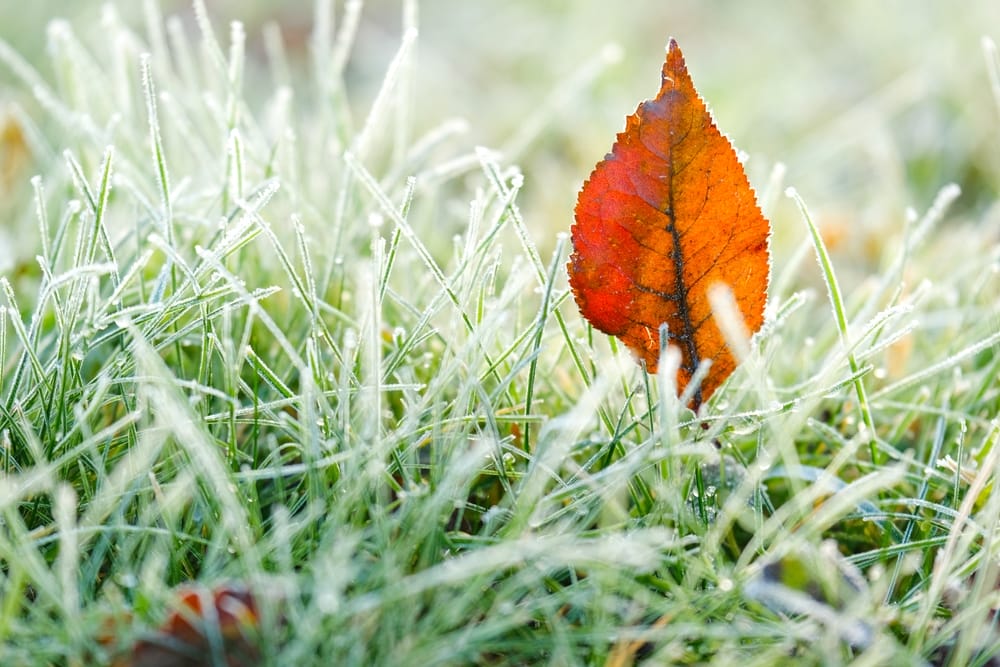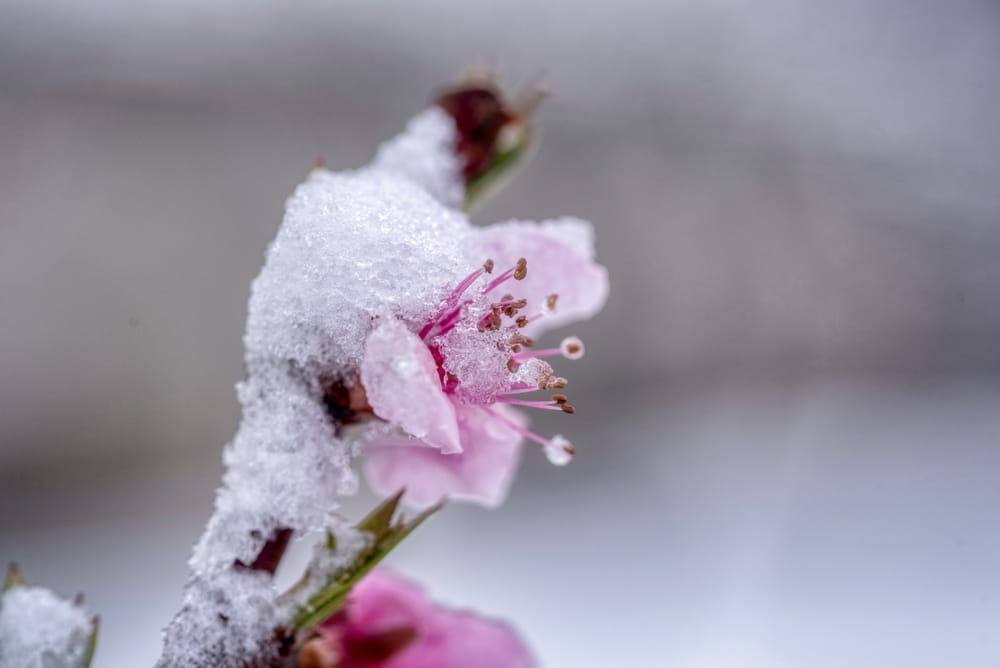
Image Source: Shutterstock.com
Some mornings you step into your yard, coffee in hand, ready to admire the beautiful greenery you’ve worked so hard to grow… only to find one sad plant wilted, drooping, or outright dead. And the wild part? It’s right next to another plant that looks annoyingly perfect, as if frost never even happened. Frost is sneaky, unpredictable, and far more selective than most gardeners realize.
Your yard isn’t one uniform temperature—it’s a patchwork of microclimates quietly shaping the survival of every leaf, root, and blossom. And lurking inside that patchwork are hidden frost zones that can sabotage your plants even when the rest of your yard feels totally safe.
Cold Air Pools Like Water In Low Spots
Cold air behaves like water—flowing downslope, settling in hollows, and collecting in dips that you don’t even notice until your plants suffer. These low pockets trap dense, chilly air while the higher areas of your yard stay several degrees warmer. It’s why the bottom of a small slope can frost while the top remains untouched. Plants in these depressions are exposed to harsher temperatures for longer periods, making them more vulnerable to damage. Once you know that cold air sinks and gathers, your yard starts looking like a landscape map of danger zones.
Structures Cast Invisible Cold Shadows
Your shed, fence, garage, or even a decorative stone wall might be creating icy shadows you never considered. These structures block sunlight during the warmest hours of the day, preventing certain areas from heating up properly. The result is a cool pocket where frost forms easily, even when the temperature barely dips near freezing. These “cold shadows” often stretch farther than you’d think, especially early in the morning when plants desperately need warmth. If some of your plants consistently struggle in the same area, a lurking structural frost shadow may be the culprit.
Open Areas Lose Heat Faster Than Cozy Corners
Wide-open spaces feel breezy and refreshing during summer, but in colder months they become frost magnets. Without the protection of trees, shrubs, or fences, heat radiates straight out into the night sky. This rapid heat loss creates cooler zones right in the middle of the yard, while corners tucked between buildings stay unexpectedly warmer. That’s why delicate plants often do better near patios or beside houses than out in the open lawn. Pay attention to where frost forms first during the winter—your yard’s most exposed areas usually reveal themselves quickly.
Mulch And Soil Types Influence Frost Formation
Soil isn’t just soil; its texture, color, and moisture level help determine how much heat it absorbs during the day and how quickly it releases that heat at night. Sandy or dry soil loses warmth rapidly, creating frosty spots sooner and keeping them frosty longer. Dark, moist soil absorbs and stores heat more effectively, providing nearby plants with greater protection when temperatures drop. Mulched areas can either warm the soil or insulate it from heat, depending on the type and thickness. It’s fascinating how two plants just a few feet apart can face wildly different frost exposure based solely on what’s under their roots.
Raised Beds And Containers Freeze Faster
Even though raised beds and planters offer great drainage and easy maintenance, they also cool down much faster than in-ground soil. Because the sides of raised beds and containers are exposed to air, they radiate heat from all directions instead of just upward. This leaves the soil inside far more vulnerable to overnight temperature dips. Many gardeners assume their raised beds are safe because they sit higher—yet those elevated areas often freeze before the ground around them does. It’s one of the biggest hidden frost traps in modern backyard gardening.
Vegetation Creates Natural Frost Barriers
Thick shrubs, hedges, and clusters of leafy plants aren’t just aesthetic—they act as temperature buffers. Vegetation traps heat, slows air movement, and creates miniature warm pockets that protect nearby plants from frost. But this effect also works in reverse: if you remove a shrub or tree, that cozy zone disappears, and a once-safe area becomes frost-prone overnight. Gardeners are often puzzled when plants suddenly start dying after removing a “harmless” bush, not realizing they disrupted their yard’s microclimate. Understanding these natural heat traps helps you plan your landscape with surprising accuracy.
Hard Surfaces Radiate Cold Overnight
Sidewalks, stone patios, and driveways warm up during the day, but they lose that warmth shockingly fast once the sun goes down. These surfaces often create cooler zones immediately around their edges, exposing nearby plants to harsh temperature swings. You may find frost forming more heavily near concrete or stone than in the surrounding lawn. Even decorative stepping stones can create chilly pockets that unsuspectingly harm sensitive flowers or herbs. If you’ve ever wondered why plants near your walkway suffer first, those heat-draining surfaces are likely to blame.

Image Source: Shutterstock.com
Water Features Play Tricks On Temperature
Small ponds, fountains, or birdbaths can raise humidity in the air around them, which sounds like a good thing—but in frost-prone weather, that humidity can turn into icy death for delicate plants. Moisture in the air condenses on leaves overnight, making frost form faster and cling longer. In some cases, the water itself cools the nearby air, creating a surprisingly cold bubble of space. On the other hand, larger bodies of water can actually prevent frost because they release stored heat. Whether your water feature helps or hurts depends entirely on its size, depth, and location.
Your House Walls Affect Frost In Weird Ways
Many gardeners assume that planting near the house is safe because homes radiate warmth, and sometimes that’s true. But houses also cast long shadows and create odd airflow patterns that lead to unexpected frost patches. On cold, clear nights, the side of the house that gets the least sun becomes a frost magnet. Even the roof can drip cold condensation onto plants below, making frost thicker and more damaging. Understanding these subtle interactions turns your home into part of your gardening strategy—rather than an accidental frost factory.
Stop Frost From Outsmarting You
Your yard may look like one big open space, but it’s really a series of microclimates—some friendly, some deceptive, and some downright dangerous to your plants. Once you understand where frost hides, how it moves, and why it strikes in unpredictable ways, you can finally plant with confidence instead of hope. Every garden has frost traps, but now you know how to spot them before they strike.
Have you noticed any strange frost patterns in your own yard? Share your stories, observations, or questions in the comments below.
You May Also Like…
- Why Soil Tilth Improves After Frost
- Why Frost Tolerant Crops Taste Sweeter
- How to Save Dahlias and Cannas Before Frost Turns Them to Mush
- 8 Cabbage Varieties That Tolerate Frost
- Stop Frost Heave from Killing Young Trees — Here’s the Fix
Leave a Reply